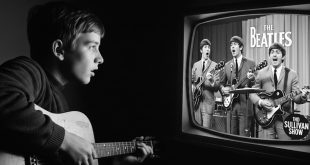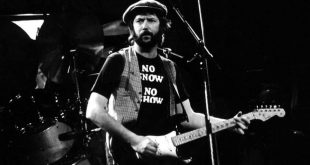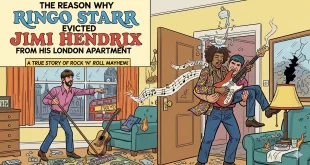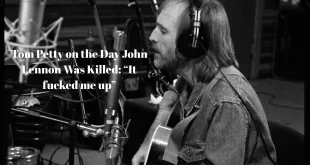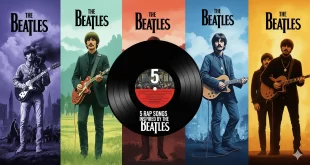John Lennon, the legendary co-founder of The Beatles, spent his final years in New York City — a city he once called the “center of the universe.” Far from the screaming Beatlemania and British tabloids, Lennon embraced a quieter, introspective life with Yoko Ono and his son Sean. These years, from 1971 until his untimely death in 1980, were marked by creativity, domestic bliss, activism, and eventually, a stunning return to music. This article dives deep into Lennon’s life in New York City, capturing the final chapter of an icon who never stopped evolving.
A New Beginning in New York City
In 1971, John Lennon and Yoko Ono left England behind in search of greater freedom — politically, socially, and artistically. They found it in New York City, a place that mirrored their avant-garde sensibilities and offered anonymity in a way London could not.
Lennon felt an immediate connection with NYC. “If I’d lived in Roman times, I’d have lived in Rome,” he said. “Today, America is the Roman Empire and New York is Rome itself.” The couple first settled at the St. Regis Hotel, then Greenwich Village, before making their permanent home at The Dakota, an iconic Gothic-style apartment building overlooking Central Park.
Domestic Life at The Dakota
Contrary to his public persona as a radical and rock star, Lennon’s daily life in NYC was surprisingly ordinary. After the birth of their son Sean on October 9, 1975 — Lennon’s own birthday — he chose to step away from music and become a full-time father. This self-imposed five-year “retirement” was a rare act of humility and devotion in the music world.
He referred to himself during this time as a “househusband.” He baked bread, fed ducks in Central Park with Sean, and became a regular (yet unnoticed) face in Upper West Side supermarkets. While some critics speculated Lennon was creatively spent, the truth was he had found contentment in domesticity.
Struggles Behind the Scenes
Despite the peace he found in family life, Lennon’s NYC years weren’t free from turmoil. The U.S. government attempted to deport him due to his vocal anti-war stance and drug convictions in the U.K. Lennon fought a long legal battle, finally winning permanent residency in 1976.
He was also dealing with deep emotional and creative struggles. During the so-called “lost weekend” (which actually took place in Los Angeles), he was separated from Yoko Ono and engaged in heavy drinking, erratic behavior, and a chaotic lifestyle. However, by the time he returned to New York and to Yoko, Lennon was ready to rebuild.
Return to Music: Double Fantasy
After five years away from the studio, Lennon returned with renewed inspiration. Walks through Central Park and time spent raising Sean had reignited his creativity. The result was Double Fantasy — a deeply personal album co-created with Yoko Ono, released in November 1980.
Songs like “(Just Like) Starting Over,” “Watching the Wheels,” and “Beautiful Boy (Darling Boy)” offered intimate reflections of a man finally at peace with himself. Critics were initially lukewarm, but after Lennon’s death, the album’s tenderness and raw honesty gained deeper resonance.
The Tragic Night: December 8, 1980
On December 8, 1980, John Lennon was fatally shot outside The Dakota by Mark David Chapman, a disturbed fan who had asked for Lennon’s autograph just hours earlier. Lennon was returning from a recording session with Yoko when the unthinkable happened.
The world was shaken. Crowds gathered outside The Dakota. Fans wept in the streets of New York, London, Tokyo, and beyond. It was the end of an era — the silencing of a voice that had once sung of peace and imagined a better world.
Legacy in Central Park: Strawberry Fields
In the wake of his death, Yoko Ono worked with the city to dedicate a portion of Central Park — directly across from The Dakota — as a memorial. The result was Strawberry Fields, named after the Beatles’ song “Strawberry Fields Forever.”
At its center lies a black-and-white mosaic that simply reads: “Imagine.” Visitors from all over the world still gather there, playing guitars, leaving flowers, and remembering the man who gave the world so much more than music.
Conclusion: The City That Became His Sanctuary
John Lennon’s final years in New York City were a blend of peace, parenting, and personal growth. They were not as glamorous or headline-grabbing as his days with The Beatles, but they were arguably more authentic.
New York allowed Lennon to be a husband, a father, and a free thinker. It was here that he let go of old wounds, found stability, and dreamed of a new future through his music — a future that was tragically cut short but left a lasting imprint on millions.
In the city where he once walked freely among strangers, John Lennon became more than a rock legend. He became a symbol of resilience, reinvention, and the fragile beauty of life.

